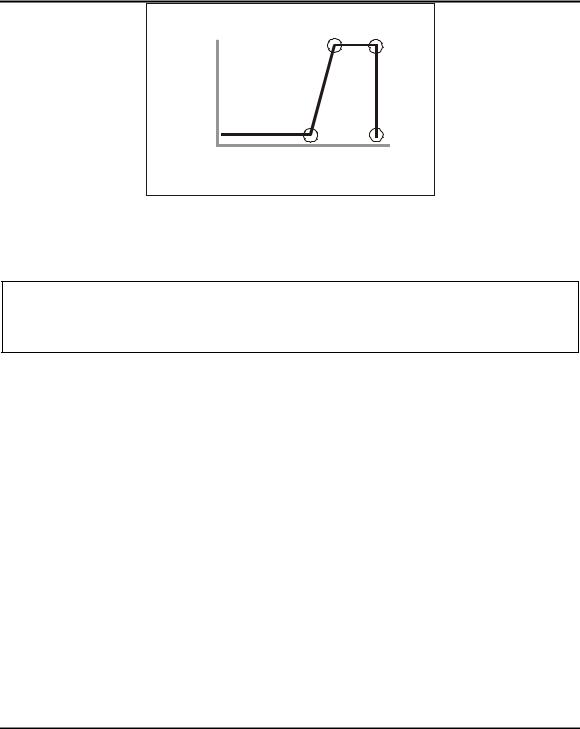
- •Forward
- •A fuzzy logic tutorial
- •Clear thinking on fuzzy linguistics
- •Fuzzy logic implementation on embedded microcomputers
- •Software Reliability and Fuzzy Logic
- •Appendix
- •Adjusting to fuzzy design
- •Clear thinking on fuzzy linguistics
- •Fuzzy logic implementation on embedded microcomputers
- •Software reliability and fuzzy logic
- •Bibliography
- •Reading List
- •Journals on Fuzzy Logic
- •Article References
- •About the authors
- •Appendix
- •Fuzzy Logic Presentation Slides
- •Index

Clear thinking on fuzzy linguistics
I have had a front row seat, watching a computing public finding uses for an almost 30 year-old new technology.
Personally, I struggled with finding an application to clearly define what all the magic was about, until I switched the question around and looked at how an ever increasing list of fuzzy logic success stories might be implemented. I then looked at the language theory to see why linguistic variables were important in describing and solving problems on computers.
Linguistic variables are central to fuzzy logic manipulations. Linguistic variables hold values that are uniformly distributed between 0 and 1, depending on the relevance of a contextdependent linguistic term. For example; we can say the room is hot and the furnace is hot, and the linguistic variable hot has different meanings depending on whether we refer to the room or the inside of the furnace.
The assigned value of 0 to a linguistic variable means that the linguistic term is not true and the assigned value of 1 indicates the term is true. The "linguistic variables" used in everyday speech convey relative information about our environment or an object under observation and can convey a surprising amount of information.
The relationship between crisp numbers and linguistic variables is now generally well understood. The linguistic variable HOT in the following graph has a value between 0 and 1 over the crisp range 60-80 (where 0 is not hot at all and 1 is undeniably hot). For each crisp number in a variable space (say room), a number of linguistic terms may apply. Linguistic variables in a computer require a formal way of describing a linguistic variable in the crisp terms the computer can deal with.
The following graph shows the relationship between measured room temperature and the linguistic term hot. In the space between hot and not hot, the temperature is, to some degree, a bit of both.
The horizontal axis in the following graph shows the measured or crisp value of temperature. The vertical axis describes the degree to which a linguistic variable fits with the crisp measured data.
Byte Craft Limited |
1 |

Fuzzy Logic in Embedded Microcomputers and Control Systems
Degree of Membership
|
Linguistic Variable HOT |
|
1 |
80 |
100 |
|
|
|
60 100
0
0 10 20 30 40 50 60 70 80 90 100
Temperature
Most fuzzy logic support software has a form resembling the following declaration of a linguistic variable. In this case, a crisp variable room is associated with a linguistic variable hot, defined using four break points from the graph.
LINGUISTIC room TYPE unsigned int MIN 0 MAX 100
{
MEMBER HOT { 60, 80, 100, 100 }
}
We often use linguistic references enhanced with crisp definitions.
Cooking instructions are linguistic in nature: "Empty contents into a saucepan; add 4½ cups (1 L) cold water." This quote from the instructions on a Minestrone soup mix packet shows just how common linguistic references are in our descriptive language. These instructions are in both the crisp and fuzzy domains.
The linguistic variable "saucepan", for example, is qualified by the quantity of liquid that is expected. One litre (1 L) is not exactly 4½ cups but the measurement is accurate enough (within 6.5%) for the job at hand. "Cold water " is a linguistic variable that describes water whose temperature is between the freezing point (where we all agree it is cold) to some higher temperature (where it is cold to some degree).
The power of any computer language comes from being able to describe a problem in terms that are relevant to the problem. Linguistic variables are relevant for many applications involving human interface. Fuzzy logic success stories involve implementations of tasks commonly done by humans but not easily described in crisp terms.
2 |
Byte Craft Limited |

Fuzzy Logic in Embedded Microcomputers and Control Systems
Rice cookers, toasters, washing machines, environment control, subway trains, elevators, camera focusing and picture stabilization are just a few examples. Linguistic variables do not simplify the application or its implementation but they provide a convenient tool to describe a problem.
Applications may be computed in either the fuzzy linguistic domain or the conventional crisp domain. Non-linear problems, such as process control in an environment that varies considerably from usage to usage, yield very workable results with impressively little development time when solved using fuzzy logic. Although fuzzy logic is not essential to solving this type of non-linear control problem, it helps in describing some of the possible solutions.
Dr. Lotfi Zadeh, the originator of fuzzy logic, noted that ordinary language contains many descriptive terms whose relevance is context-specific. I can, for example, say that the day is hot. That statement conveys similar information to most people. In some ways, it conveys better information than saying the temperature is 35 degrees, which implies hot in most European countries and quite cool in the United States.
The day is muggy implies two pieces of information: the day is hot and the relative humidity is high. We can have a day that is hot or muggy or cold or clammy. In common usage linguistic variables are often overlapping.
Muggy implies both high humidity and hot temperatures. The variable day may have an extensive list of linguistic values computed in the fuzzy domain associated with it (MUGGY, HUMID, HOT, COLD, CLAMMY). If day is a linguistic variable, it doesn't have a crisp number associated with it so that although we can say the day is HOT or MUGGY, assigning a value to day is meaningless. All of the linguistic members associated with day are based on fuzzy logic equations.
When fuzzy logic is used in an application program, it adds linguistic variables as a new variable type. We might implement an air conditioner controller with a single fuzzy statement
IF room IS hot THEN air_conditioner is on;
We can extend basic air conditioner control to behave differently depending on the different types of day.
The math developed to support linguistic variable manipulation conveniently implements an easy method to switch smoothly from one possible solution to another. This means that, unlike a conventional control system that easily implements a single well behaved control of a system, the fuzzy logic design can have many solutions (or rules) which apply to a single problem and the combined solutions can be appropriately weighted to a controlling action.
Byte Craft Limited |
3 |

Fuzzy Logic in Embedded Microcomputers and Control Systems
Computers–especially those in embedded applications–can be programmed to perform calculations in the fuzzy domain rather than the crisp domain. Fuzzy logic manipulations take advantage of the fact that linguistic variables are only resolved to crisp values at the resolution of the problem, a kind of self scaling feature that is objective-driven rather than data-driven.
To keep a room comfortable, the temperature and humidity need to be kept only within the fuzzy comfort zone. Any calculations that have greater accuracy than the desired result are redundant, and require more computing power than is needed. Fuzzy logic is not the only way to achieve reductions in computing requirements but it is the best of the methods suggested so far to achieve this goal.
Linguistic variable types are taking their place alongside such other data types as character, string, real and float. They are, in some ways, an extension to the already familiar enumerated data types common in many high level languages. In my view, the linguistic domain is simply another tool that application developers have at their disposal to communicate clearly. When applied appropriately, fuzzy logic solutions are competitive with conventional implementation techniques with considerably less implementation effort.
4 |
Byte Craft Limited |
